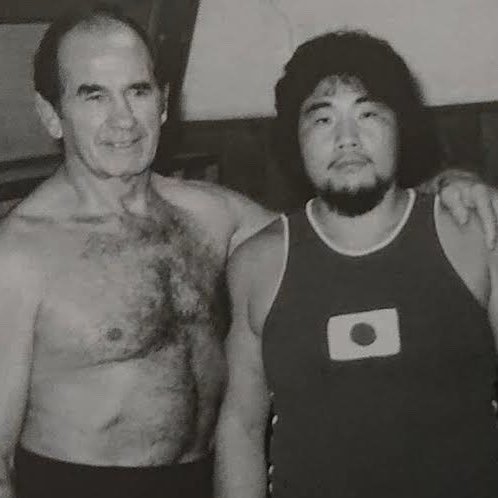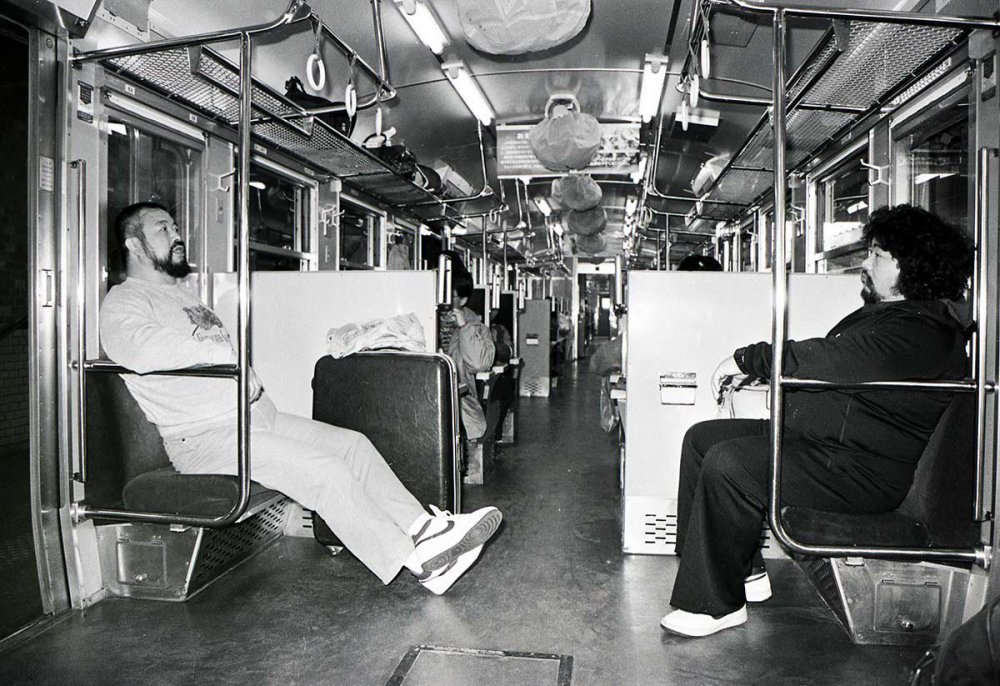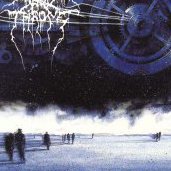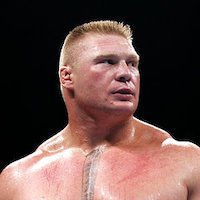Search the Community
Showing results for tags 'SWS'.
-
Talk about it here.
- 20 replies
-
- SWS
- October 11
-
(and 5 more)
Tagged with:
-
Shogun KY Wakamatsu (将軍KYワカマツ) Profession: Wrestler, Manager, Promoter Real name: Ichimasa Wakamatsu (若松市政) Professional names: Ichimasa Wakamatsu, KY Wakamatsu, Shogun KY Wakamatsu Life: 1942/01/01- Born: Hakodate, Hokkaido, Japan Career: 1973- Height/Weight: 181cm/105kg (5’11”/231 lbs.) Signature moves: KY Special (abdominal stretch) Promotions: International Wrestling Enterprise, New Japan Pro-Wrestling, SWS, Pro Wrestling Crusaders, Dosanko Pro Wrestling Dojo Geki (as promoter) Titles: none A thirty-year-old roadie who trained to wrestle for the IWE, Shogun KY Wakamatsu found his greatest success as a heel manager in the 1980s. Wakamatsu tries to sell an IWE ticket to a Tokyo traffic cop on March 23, 1980. After graduating junior high, Ichimasa Wakamatsu had spent fifteen years working as an electrician and stevedore before he joined the International Wrestling Enterprise. His primary job was and would remain as a member of the ring crew, but he trained to wrestle part-time, filling up the company’s undercards as a second-string wrestler. He debuted on September 29, 1973, in a singles match against Katsuzo Oiyama. Judging by Cagematch records, he worked roughly 20 to 35 dates per year for the rest of the decade, as he left his family in Hokkaido to live alone in the IWE’s Omiya dojo. On September 13, 1976, Wakamatsu made national news when he drove the IWE truck by a family whose house was caught in a landslide. He stopped and helped them gather their belongings as, unbeknownst to him, an NHK news crew broadcast his efforts live. On August 26, 1979, he entered the Pro Wrestling Dream All-Star Match show’s opening battle royal, in which his future client Junji Hirata also competed. By that time, he was sharing his truck rides with Hiromichi Fuyuki, a ring crew employee who would pivot into his own wrestling career. Wakamatsu was scheduled to go overseas in the summer of 1980, after a last match against Nobuyoshi Sugawara. This instead ended up being his last match for several years, as Wakamatsu refused to leave the company in its most vulnerable state. He pivoted into sales work to help keep Kokusai afloat. After their last tour with full network backing, Wakamatsu was hospitalized for pancreatitis, but he was soon putting up posters for the next tour. IWE television producer Motokazu Tanaka has stated that Wakamatsu is “one-third” of the reason that the company survived as long as it did during its death rattle. His Japanese Wikipedia page claims that he could not return to Hokkaido after the company went under because he had received a parting gift from the supporters’ association in Ashibetsu. Whatever that means, he returned to electrical work, punching the clock for TEPCO until he had enough money to travel to Calgary. Wakamatsu began work for Stampede Wrestling in 1982. Stu Hart gave him the ring name KY Wakamatsu, in reference to an unspecified Canadian general. (I would appreciate it if any Canadians could explain the reference, as I could not find a name with those initials.) While he would wrestle for Stampede, his most notable work was managerial, as Wakamatsu offered his services to Bad News Allen. KY played a part in Allen’s 1983 feud with the Dynamite Kid, and was part of the mix late that year, when a Bruce Hart angle in which Allen broke the neck of the Stomper’s kayfabe son would derail Stampede. Wakamatsu returns to Japan in August 1984. Junji Hirata, who had worked in Stampede as Sonny Two Rivers, was called back to New Japan in the summer of 1984. As he was told, the plan was to license a Kinnikuman gimmick, in an attempt to replicate the success of Tiger Mask after the Cobra had not caught fire. Wakamatsu was invited to join NJPW by his old boss, Isao Yoshiwara, who had taken a consulting position with the company. Due to the Kinnikuman anime being broadcast on AJPW’s Nippon TV, negotiations proved difficult, and were still underway when Hirata and Wakamatsu made their first appearance on World Pro Wrestling. Hirata wore shoulder pads under a white t-shirt, and a blue balaclava over his Kinnikuman mask, while Wakamatsu wore a bowler hat, surgical gown, and Geordi La Forge-esque visor, while also donning a whip. One week after this first appearance, amidst Naoki Otsuka’s announcement that he would pull wrestlers out of NJPW, the two appeared again at a Minami-Ashigara show. This time, Hirata had selected a new mask inspired by the manga Laughing Mask. As Wakamatsu claimed in a 2016 G Spirits interview, he improvised his client’s new ring name on the spot: Strong Machine. A singles match with Inoki was set for September 7, and on that day, the gimmick kicked into second gear. Wakamatsu recalled in G Spirits that he had been inspired by the Assassins, the Jody Hamilton tag team, to create “an army” of wrestlers with the same masks and costumes. For his official debut, “Strong Machine #1” was seconded by Wakamatsu and thirded by Strong Machine #2 (Korean wrestler Yang Seung-hee). Phil Lafon would play a third Strong Machine for a single November appearance, but skipped out on wrestling due to a cold, leading an unmasked Hiro Saito to take his place. In January 1985, the Machine Army reached its full form, as NJPW’s connections to Polynesian Pacific Wrestling saw them book the original IWE trainee turned overseas journeyman Yasu Fujii, and Ratou Atisano’e, the younger brother of Samoan rikishi Konishiki Yasokichi, as #3 and #4 respectively. (Atisano’e had no wrestling experience, but hardly wrestled anyway.) Hiro Saito By then, Wakamatsu had developed his costume. He had switched out the visor for sunglasses, and the surgical attire for black and red outfits, which read KAERE (“Get out!”) on the back. As the gimmick was that these wrestlers were under Wakamatsu’s direct control (which led play-by-play man Ichiro Furutachi to throw out nicknames like “the Dr. Ochanomizu of Hell” and “Evil Shotaro-kun”), he used a red megaphone to shout orders to them while also talking to the audience. This predated Jimmy Hart, and as has been alleged, may have inspired him. Wakamatsu with Bill Eadle and Andre the Giant in August 1985. The Machine Corps angle kept New Japan afloat after the devastating pullout of Riki Choshu and Ishin Gundan, as World Pro Wrestling ratings did decline, but remained over 15%. However, NJPW saw the gimmick as a time-filler, and when Bruiser Brody was swiped from All Japan the following spring, the Machine Army suffered. In an April singles match against Tatsumi Fujinami, Strong Machine #1 was accidentally blinded by Wakamatsu’s powder attack and lost to a Dragon Suplex. This led Hirata to split from the Army and become Super Strong Machine, and disagreements with an office that wanted him to unmask and return to the company’s main unit—which infamously manifested in a Fujinami promo where he broke kayfabe and called SSM by his real name—would eventually lead Hirata to leave New Japan. While the Strong Machines soldiered on without SSM for a few months, and Wakamatsu released a novelty single in the meantime, Hirata’s August departure led to their disbandment. In a desperate, last-minute measure, Andre the Giant was given a Machine mask to wrestle as Wakamatsu’s new client, Giant Machine. Even if his bare face had not already been advertised on tour posters, the Giant Machine’s identity would have been obvious. But it meant more work for Wakamatsu, as Bill Eadle also donned a Machine mask. When the WWF ran their own version of the Machines gimmick, Andre would even offer to get Wakamatsu work overseas. However, he was under contract with TV Asahi, and refused out of loyalty to the late Yoshiwara and TV Asahi executive Takahei Nagasato. On May 1, 1986, during Andre’s final NJPW tour (where they didn’t bother with the Machine gimmick), Wakamatsu wrestled his first match since Stampede, teaming with the Giant against Antonio Inoki and Umanosuke Ueda in a Ryogoku Kokugikan main event; he took the pinfall in eight minutes after receiving an Inoki enzuigiri. The heel manager remained in rotation through 1986, with clientele ranging from Kendo Nagasaki and Mr. Pogo, to Madd Maxx and Super Maxx, to Konga the Barbarian and “Super Mario Man” (Ray Candy in a white mask). In the late 1980s, Wakamatsu became acquainted with Megane Super eyewear magnate Hachiro Tanaka, and the two watched Newborn UWF shows together. As the decade came to a close, Tanaka prepared to enter the wrestling business himself, and Wakamatsu was one of his closest allies. In the summer of 1989, Wakamatsu traveled to Calgary to work a handful of dates for the dying Stampede, and to attempt to secure the support of Mr. Hito. After this, he made stops across the United States, where he worked with the USWA in Texas, and helped Kazuo Sakurada attempt (nearly successfully) to court Keiji Mutoh towards signing with Tanaka’s new company when he finished his WCW excursion as the Great Muta. After a stop in Germany, he returned home in November. Wakamatsu continued to recruit talent as SWS took shape. He was responsible for signing the biggest ex-NJPW star that the company would feature, George Takano. (According to an uncited passage on Japanese Wikipedia, Wakamatsu had intended to sign his brother Shunji instead, and had asked George for his contact details, but George lied and claimed that he did not speak much with Shunji in order to get himself a better position in the company.) Wakamatsu officially joined SWS in May 1990. In the promotion’s sumo-inspired room system, he was made the leader of the Dojo Geki stable. He wrestled on the company’s second-ever show, beating Fumihiro Niikura in the third match. Although the following year would see Wakamatsu work a handful of tag matches, he would leave the company after the death of his wife, with Yoshiaki Yatsu taking his place as Dojo Geki head. Wakamatsu and Super Strong Machine reunite for the latter's 2019 retirement ceremony. Wakamatsu returned to wrestling in 1993, working with Shunji Takano’s Pro Wrestling Crusaders promotion as the leader of the Space Power Corps. In keeping with PWC’s wackier tendencies, he would use supernatural abilities such as telekinesis in the ring, and once even made an opponent faint through his “great cosmic power”. In 1994, Wakamatsu formed a small promotion in his native Hokkaido, Dosanko Pro Wrestling Dojo Geki. In 1999, he transitioned into local politics when he was elected to the Ashibetsu City council. Outside of a couple appearances in FMW and DDT at the start of the new millennium, Wakamatsu apparently stepped back from significant wrestling work until a tag team battle royal at a 2007 independent show in Tokyo, which he won alongside Great Kojika. In the 2010s and beyond, he has made appearances for shows promoted by the Hokkaido indies Hokuto Pro Wrestling and Asian Pro Wrestling, as well as a couple of Shonan Pro Wrestling shows promoted by former IWE coworker Masahiko Takasugi, and Keiji Mutoh’s 2019 Pro-Wrestling Masters show. At the time of his matches in September 2023, Wakamatsu was the eldest active wrestler in Japan.
-
Goro Tsurumi (鶴見五郎) Profession: Wrestler, Promoter Real name: Takao Tanaka (田中隆雄) Professional names: Takao Tanaka, Goro Tsurumi, Goro Tanaka, Ho Chi Lau, Shito Tanaka, Uchu Power X Life: 11/23/1948-8/26/2022 Born: Yokohama, Kanagawa, Japan Career: 1971-2013 Height/Weight: 181cm/135kg (5’11”/297 lbs.) Signature moves: Avalanche backdrop, Goro Suplex (teardrop suplex), backhand fist Promotions: International Wrestling Enterprise, All Japan Pro Wrestling [freelance], SWS, Kokusai Pro Wrestling Promotion Titles: IWA World Heavyweight [IWA Kokusai] (3x); IWA World Tag Team [IWA Kokusai] (6x; 1x w/Yoshiaki Yatsu, 2x w/Masahiko Takasugi, 2x w/Super Uchu Power, 1x w/Uchu Majin Silver X) IWE veteran Goro Tsurumi found his voice with a heel turn in the promotion’s last days and spent the next thirty years working as a freelancer and indie fixture. Born to a Yokohama fruit-and-vegetable merchant, Takao Tanaka pursued amateur wrestling while studying at Tokai University despite his alma mater’s lack of a club. After receiving his bachelor’s in science, Tanaka joined the International Wrestling Enterprise in June 1971 through an acquaintance of Thunder Sugiyama. On July 12, he debuted in Sapporo with a loss to Takeshi Ōiso. He debuted under the ring name Goro Tsurumi in the following spring’s IWA World Series tour; this was to avoid confusion with his senior Tadaharu Tanaka, who returned from excursion at this time. Tsurumi was the name of the Yokohama ward from which he hailed, and according to one profile, “Goro” came from Goro Fujikawa, the protagonist of the 1968-9 Outlaw film series. In late 1972 and early 1973, Tsurumi worked on early tours by All Japan Pro Wrestling in a cooperative display, though this was on a temporary basis rather than the permanent transfers of Sugiyama and Atsushi Hongo. In March 1973, Tsurumi left Japan alongside Hiroshi Yagi to begin a European excursion under the custody of IWE booker Umenosuke Kiyomigawa. Much of Tsurumi’s work was for Nicola Selenkowitsch’s IBV in West Germany, but he also worked in England, Spain, Austria, and even Kuwait. Tsurumi reportedly trained in Billy Riley’s gym while in England. After finishing his European tour in Spain, Tsurumi traveled to Mexico in August 1974, where he would work as Goro Tanaka. During his time with EMLL, he teamed and then feuded with TNT, losing an apuesta to him in October as well as one against Cien Caras the following April. Tsurumi reportedly received a shot at Dr. Wagner’s NWA World Light Heavyweight championship and won the match, but the belt was relinquished by the commission as he had been overweight. (Tsurumi once told an anecdote that, unlike most Japanese wrestlers in his day, he actually gained weight during this period due to his cooking skills.) Tsurumi flew back to Europe to work in Spain and Germany before returning home for the IWE’s Big Winter Series tour in November 1975. Tsurumi plugged away as a midcarder thereafter. In November 1977, he was selected as Animal Hamaguchi’s partner for Kokusai’s first challenge against AJPW’s All Asia Tag Team champions, Great Kojika & Motoshi Okuma. In late 1978, after Mr. Seki was unable to make it, Tsurumi received his spot in the Japan League tournament, which was an IWE tournament held with the cooperation of AJPW and overseas-based Japanese wrestlers such as Mr. Hito and Dean Ho. (This was booked to counter-program NJPW’s Pre-Japan League tournament.) Left: Dokuritsu Gurentai, left to right: Mr. Chin, Tsurumi, Katsuzo Ōiyama. It was in the IWE’s last two years, though, that Tsurumi’s career started to get interesting. As Kokusai’s financial difficulties increased, president Isao Yoshiwara conceived of an angle in which one of his own wrestlers turned heel, which would allow him to cut foreign booking costs. On October 3, 1979, Tsurumi was not booked for a match and confronted Yoshiwara, entering a fistfight with IWE’s star exchange student, Jiro Inazuma (better known in the West as “Champagne” Gerry Morrow). Yoshiwara expelled Tsurumi from the wrestlers’ association, and Tsurumi assaulted him. There were certainly Japanese wrestlers who worked heel in Japan before Tsurumi. Generally, though, these wrestlers did not work full-time in Japan, instead being “freelancers” who mostly plied their trade abroad and worked in their homeland on a per-tour basis. Tsurumi was different. He would change his costume from a singlet with a Japanese flag decal to one with a red skull and crossbones, and eventually grew an afro. Tsurumi would be joined by Katsuzo Ōiyama, who returned to the ring after retiring in early 1979. The two would be managed by Mr. Chin, who was probably the one person in puroresu who had worked as a full-time “native heel” before them. The three formed the Dokuritsu Gurentai, or Independent Fool Regiment, on January 4, 1980. Dokuritsu Gurentai did not last to the end of the promotion, as it disbanded when Ōiyama retired for a second time in March 1981. It was also a decidedly midcard affair; hell, "jobber stable" might be more accurate. Nevertheless, it was the first example of an insurgent faction in puroresu, anticipating Riki Choshu’s Ishin Gundan by several years. Tsurumi and Ōiyama are also notable for having been the opponents in Kotetsu Yamamoto’s first retirement match, losing to the Yamaha Brothers on NJPW turf on April 4, 1980. FIve months after Dokuritsu’s disbandment, Tsurumi received the distinction of wrestling and winning the IWE’s last match, a wire-mesh deathmatch on an elementary school’s grounds against Terry Gibbs. (This did not constitute a push for Tsurumi, as Kokusai’s final shows had booked WMDs by a pre-arranged rotation.) Tsurumi rides the subway with Rusher Kimura. Tsurumi left Japan after Kokusai’s collapse, working for the CWA in West Germany as well as Stampede. He would return to the Japanese fold for the first AJPW tour of 1982, where he would team up with Umanosuke Ueda as a foreign heel. Through the rest of the decade, Tsurumi would work extensively for All Japan. He continued to be associated with Ueda in the early years of his tenure, before Ueda ended his association with them in 1984. Tsurumi entered the Real World Tag League twice, first alongside the Mongolian in 1983, and then with One Man Gang as a replacement for Buzz Sawyer in 1984. In the mid-80s, Tsurumi joined the Kokusai Ketsumeigun heel faction to reunite with former Kokusai ace Rusher Kimura; as Kimura had arguably been the most physically limited ace in the history of puroresu during his best years (in his defense, this is what happens when Ox Baker breaks your leg in three places and the company is too unstable to ever let you fully heal), it fell to Tsurumi to carry their end on many a tag match. I swear that I have read Tsurumi receive praise in or around this period from Dave Meltzer. What was notable about Tsurumi’s run with All Japan was that he remained a freelancer the entire time, despite offers from Giant Baba to sign a contract. Tsurumi had a wife in the States, and a contract would have had AJPW hold on to much of his money. (As was revealed in documentation from a lawsuit filed by AJPW talent who left for SWS, Tsurumi’s freelance status saw him paid three times as much in the 1989 fiscal year as Genichiro Tenryu.) Tsurumi was about to receive a spot in the comedy six-mans that AJPW was developing in the early 90s; he would have been a member of Baba & Kimura’s Family Gundan stable. However, Tsurumi decided to leave for what would become SWS and contacted former IWE coworker Shogun KY Wakamatsu to get in. Tsurumi would remain with SWS until its closure, as part of its Dojo Geki contingent. In the promotion’s last days, he became one part of its two-man booking committee, wherein he would draw up cards representing its anti-Tenryu contingent, present them to pro-Tenryu counterpart Takashi Ishikawa, and reach a compromise for each show from there. After SWS imploded, Tsurumi joined NOW. This is where the last act of Tsurumi’s career begins. After leaving NOW in 1993, Tsurumi joined forces with fellow IWE alumnus Masahiko Takasugi and Ho Death Minh, formerly of the Takano brothers’ Pro Wrestling Crusaders, to form the International Wrestling Association, a union of independent promotions. The three men formed their own promotions under this umbrella: IWA Kakutō Shijuku, IWA Shonan, and IWA Nagareyama, respectively. As I know that IWA Shonan ran shows both in Takasugi’s hometown and Yokohama, Tsurumi’s IWA Kakutō Shijuku may have ran in his business partners’ markets as well, though I did not confirm this. The Union was dissolved and renamed Union Pro Wrestling in 1994, shortly before IWA Japan ran its first show. Ho, who would change his ring name to Poison Sawada, apparently struggled to run shows outside of his hometown, and Union Pro held its last show in April 1995 before dissolving the following year. While Takasugi would rename his promotion Shonan Pro Wrestling, Tsurumi renamed IWA Kakutō Shijuku to Kokusai Pro Wrestling Promotion with the permission of Isao Yoshiwara’s family. For about a decade afterward, KPWP ran small-scale but steady operations while Tsurumi managed gyms in Yokohama’s Tsurumi and Chigasaki districts. In 2005, though, KPWP suspended its activities, and his gyms closed the following year. Tsurumi continued to wrestle until a 2013 retirement show, held at the 600-seat Shinjuku FACE hall in Tokyo with the cooperation of DDT and Pro Wrestling FREEDOMS. He spent much of his last eight years hospitalized for various conditions and had been supported by t-shirt sales from DDT and FREEDOMS. Tsurumi died of sepsis on August 26, 2022.
-
Let's talk about AJPW in the Spring of 1986! These are the Samurai Classics so no Riki Choshu but hey there's lots of other great stuff going on. Ted Dibiase/Ron Bass v. Motoshi Okuma/Rocky Hata (04/06/86): Kind of a squash match. Of the Japanese guys, I'm not sure who was who. Respectable start to the show nonetheless. Kuniaki Kobayashi v. Masa Fuchi (04/06/86): Now we're cooking! Kobayashi and Fuchi are just beating the crap outta each other and I loved it. Two of my favorites in their prime. Very good match Tenyru/Takashi Ishikawa v. Ted Dibiase/Ron Bass (04/19/86): Oh man everyone is on fire here. We get the nice introduction to the DiBiase & Ron Bass team and now we see what they can do versus one of the top AJ native teams. This was so basic but absolutely wonderful because you don't need big moves and flash to have a great tag match. DiBiase in AJ is the best. He vs Tenryu is money in the bank! Tenyru v. Ashura Hara (04/12/86): Holy cow '86 Tenryu is awesome! The Tenryu/Jumbo vs Yatsu/Choshu match from 01/86 is a classic but now I'm seeing more of him and there's more to the story. He's not quite as well defined as a hard hitting wrestler yet but man does Ashura Hara bring that out in him! It makes sense though as Hara is a tank and I love their tag team during the Revolution era of AJ/Tenryu. This totally exceeded my expectations. I want to call it a classic but I'll pull back a little and just say near classic at ****1/4. Harley Race/Jerry Blackwell v. Tiger Jeet Singh/One Man Gang (03/13/86): Quick bout, Blackwell vs OMG were like 2 sumo but after that it turned into a double DQ. Shohei Baba/Ricky Fuyuki/Takashi Ishikawa v. Rusher Kimura/Ashura Hara/Goro Tsurumi (04/06/86): Really fun 6 man match! Fuyuki and Ishikawa along with Hara kept this really competitive. Goro Tsurumi is an awesome character looking like a manga heel wrestler with afro pirate mustache and skull adorned unitard. Rusher and Baba do their job and yeah this is the stuff that puts a smile on my face. Baba/Ishikawa v. Killer Khan/Masanobu Kurisu (05/10/86): OK, thought I'd like it more with Kurisu & Ishikawa but it didn't do much for me. Tenyru v. Ted Dibiase (UN Title, 04/26/86): Well here is the singles match that I was looking for. And man, it's what I wanted. Great smart arm work by DiBiase. Just a really good give and take in the beginning/middle. This is joined in progress so not sure what the true start is like. Nonetheless, the match goes on pretty long I think. In that time we get solid mid 80's meat and potatoes wrestling from both guys. Its the stuff I could watch for an hour because they have created a world where it looks like their struggle is real and relatable. Not only that but we get two of the best in the world doing it. They are physically and stylistically a great match for each other. A great match for sure! If you're a fan of Tenryu and what they were doing in SWS and WAR, you really want to check out some of these matches. Thanks for reading and stay safe folks!
-
- ajpw
- ted dibiase
-
(and 4 more)
Tagged with:
-
Talk about it here.
- 14 replies
-
- SWS
- September 15
-
(and 5 more)
Tagged with:
-
Talk about it here.
- 10 replies
-
Well executed fast paced multiman matched. Just the right mix of character work and bomb throwing. Loved the highly unpredictable opening exchanges. Loved Haku, who is both a menacing beast and really agile, Nakano is a good underdog trying to topple Tenryu here, and the Tenryu/Ishikawa/Hara team is a murderers row of charismatic bulldozers. Not much extended selling or great transitions but enough tubby guys cracking eachother hard to keep you entertained.
-
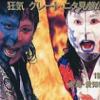
All Elite Wrestling - This seems oddly familiar...
G. Badger posted a blog entry in G. Badger's Puro + More
I wanted to give my opinion on the big topic of the new year: All Elite Wrestling. I'm not in the know in terms of facts and figures concerning the owners or the talent its centered around. I don't know what their income is or what they're worth or any of that financial stuff. Similarly, I don't have any scoop on which wrestlers or other performers are going to sign with the company. It doesn't seem worthwhile to post any of my opinions or suggestions in the AEW topic on the main forum. This is more about my take on the whole thing rather than news or debate. It feels that everyone is really excited about all of this because it's a pretty big shake up. Three pretty big wrestlers who worked for ROH and NJPW have branched out on their own and are getting even bigger friends (Omega & Jericho) to join them in their new company. Along with them are some more prominent Indy wrestlers as well a couple more friends from Japan (CIMA and I'm guessing Ibushi (who's Independent) will work with them). Oh how exciting!! It certainly is a bit of a shake up since everyone who's never listened to a shoot interview from the Bucks or Omega thought that they'd go to the WWE. Or at least that's what the YouTube channels wanted us to think. That seriously would have been a creative blunder on their parts so, it's neat to see them go it on their own. But, I don't know what people are expecting. That is to say, I don't know IF, from a match quality standpoint, they are expecting anything different than what PWG has been doing for about a decade. And I don't know if they are expecting angles, stables, arcs, and feuds either. At Jump, I have a couple rhetorical questions: OK you've tentatively got Kenny Omega, the #1 wrestler that everybody wants. But who are they going to have him go up against? Who's out there on the market that he could work a engaging program with? Is Penta and/or Fenix available? And for how long? Cody has more competition on his level but, is this really interesting anyone? What about the Bucks? They can work with anyone but, the problem is that they've already worked with EVERYONE. It seems to me they have one genuine superstar and then A-B level talent in Cody & the Bucks. Jericho is there but, for how long and in what capacity? Now ponder for a moment - what if WWE/NXT didn't buy Ricochet, Adam Cole, reDRagon, Roddy Strong, Keith Lee, and Walter like the 2nd coming of Eric Bischoff in WCW...then this AEW thing would have some teeth, no? It'd really have some fangs if they could get guys to jump ship from the 'E to AEW. Supposedly there's talk of the Revival going over? That might be something... what's Kevin Steen, Devitt, KENTA and the rest of the 205 Live Roster doing nowadays? PAC is a start, right? Truth be told, this really has similarities to old Japanese groups like UWF and SWS especially. I know AJPW at the turn of the 90's better than what happened in UWF but, I'll get back to them. SWS had a big money investor get a bunch of top talent from AJPW and a couple from NJPW to start a company. Tenryu and Yatsu were big F-ing deals in 89-90 AJ. You've got your #1 heel/rival to Jumbo (Omega to Okada) and then Jumbo's tag team partner leaving. In NJPW terms, perhaps its like an Ishii or Goto leaving. Then, Nakano & Takano who were the face "junior" tag team against Kawada/Fuyuki's Footloose. Even Fuyuki left too! They got Naoki Sano from NJPW. Cody, Young Bucks, PAC and Adam Page sounds similar to me. Then you had older guys like Ishikawa & Great Kabuki and other guys who were past their prime at the time like George Takano & Kendo Nagasaki. I won't say Jericho here but, CIMA seems like a decent fit (since read that Daniels, Kaz & Scorpio Sky are on board and I think they are applicable here). Then, you had up and coming juniors like Asai (Ultimo Dragon to be), Masao Orihara, Katayama et al. This sounds like your Joey Janela and other independent guys and girls. Of course the big difference, SWS had the support of the WWF and their stars from the get-go. It wouldn't last BUT, it helped them get a foothold. With AEW, they've burned some big bridges on BOTH sides of the world with this move. Now we come back to the UWF. The company had to fold within a couple years due to differences between Maeda & Sayama as well as the larger financial problems. SWS folded too but, WAR came out of that. We know how NJ worked with Tenryu and his company throughout the 90's and 2000's. Omega is Tenryu level here. So, NJPW has historically been forgiving if they can make money so that doesn't cut things off for them completely. So if the Elite boys are smart, they will try and be like WAR from the get go. They can do this by not going into business to directly compete with the big dogs AND by not focusing on the money. Seriously speaking, I see this as means to put on monthly shows that are PWG like dream cards but in much larger venues. Dream shows once a month, internet based everything (probably no DVDs or Blu-ray), and tee shirts. I could see them touring as well but, a relaxed schedule like ROH. The indy guys and girls make up most of the card and the "Elite" do 6 man matches to lead into the BIG shows. YouTube free matches/shows or streamed service TV shows of these matches is very likely to keep costs down. Perhaps if they book angles or story arcs, a studio show like TNA Asylum/Impact Zone could be there instead or if a TV deal is there. Honestly, I look at this AEW as a vanity project. They probably do too. I don't think they're looking to get richer but, just do WHAT they like-WHEN they like and pay the bills. I can certainly admire them for that. Now who knows what that means for the Adam Pages, Joey Janelas, and the younger folks of the company? The bleeding heart fans, like myself, are excited at the prospect of the performers receiving unbiased wages and health care. I think that those hopes are quickly being dashed against the rocks from what I've seen though. I do think it'll be more PWG-wrestler owned & operated than NJ, ROH, or WWE. So, beyond that, what does AEW hold for us fans? What can they offer us that's new & exciting? Are they going to fall back upon the allure of the Dream Match OR do wrestling with good stories and good booking? Honestly, I think AEW is taking the PWG mentality and product to a national (international?) level. Its not that it'll be anything new BUT, it will be more accessible and more visible than the insular PWG. I'd love to see genuine drama in wrestling and perhaps Jericho will be called upon to book (which would be the very best use of him). They have the resources to do it so, it is a possibility. And finally the larger implications of this company and it's possible success: If it's around for a few years, I wouldn't be surprised if they take ROH's spot as NJPW's US partner promotion. And like SWS/AJPW it may create a situation in NJPW, where they decide to elevate some guys and create a whole new generation of stars for the 2020's. Yeah, it is exciting. Guess we just have to wait and see... Thanks for reading!-
- kenny omega
- young bucks
-
(and 2 more)
Tagged with:
-
Talk about it here.
-
So just a couple days ago after watching that tag I looked up Fujiwaras matches in SWS and how did this fly under my radar? This was really good and an excellent example of how to work a quasi-shootstyle match in a big stadium. Ishinriki has looked good in matches I've seen him in, but he completely blew me away here. Pretty unique structure with Fujiwara not being very dominant at all as Ishinriki constantly pushed him. It makes sense for a sumo guy to have a strong standing game to prevent getting thrown as shown here. The sumo rushes ruled obviously as did Fujiwaras sudden kick combos. This is a rare match where Fujiwara gets frustrated throughout. Ishinriki landing PRIDE stomps on the ground made me wish more juniors would try to set up a flying move like that. Classic finish. This had great heat, nasty strikes throughout and a couple big moments.
-
Fun as hell little undercard trios centered around Nakano and Fuyuki hating eachothers guts. They are immediately at eachothers throat and trading beatings, Nakano asks Fuyuki to tag in etc. This is broken up by some weird and wonderful Sano/Ishikawa workrate interactions with Ishikawa hitting an awesome tubby old man plancha. However it's back to hatred and soon Nakano has punched a beeding wound into Fuyukis forehead. Then we get Kabuki punching and kicking a bloody Fuyuki in the face (as it should be). Fuyuki is quite the good sympathetic babyface here, doing his high pitched yelling etc. The finishing run is really fun too with Takahi Ishikawa being fired up, Kabuki hitting superkicks. Finally Nakano goes to town on Fuyuki with the chair. These two probably faced eachother at a Pioneer Senshi houseshow or something and we only got a taste here, but it really elevated what could have been a throwaway undercard tag.
-
- shinichi nakano
- great kabuki
- (and 12 more)
-
Tubby japanese guys slap the shit out of eachother for 20 minutes. Love this because it's a really good example of how to build a lengthy match around a handful of strikes. Nakano and Kitahara are not over at all due to the SWS midcard being almost meaningless, but they give their all taking on these tanks and get the everliving crap kicked out of them. Hara & Tenryu deserve some credit for selling a good deal for these middleweights while outgunning them completely. Lots of neat spots and there are some good examples on how to make basic strikes interesting by SELLING. See: Tenryu getting caught in the ear by an enzuigiri or selling Nakanos corner dropkick. Hara is also really good at taking kicks to various body parts and refusing to bump. By the end Kitahara and Nakano are basically beaten half to death. There is one great sequence where Nakano is giving everything he has hitting several dropkicks and enzuigiris only to be forced to tag back in and run on empty. Tenryu just powerbombing him is an example of no selling that works because it was done in context of the match with a set up and purpose. Kitaharas leg selling was also cool and added some direction. This is a rare match where one side never comes close to winning but still ends up being great in my book.
-
- sws
- shinichi nakano
- (and 6 more)
-
SWS style tag with Fujiwara thrown in the mix. So you have tubby juniors exchanging brutal spin kicks and lariats at a fast pace and Fujiwara throwing in some lightning fast counters and hitting the mat. The 3 young guys are really good and Fujiwaras presence adds just what this kind of undercard match needs. Ishinriki is a former sumo who works like a junior and junior who used to be a sumo is much better than junior who used to be a gymnast. He hits some big dive and also nice palm rushes and lariats. Kitahara and Nakano look good hitting the mat with Fujiwara. Highlights include Fujiwara hitting a huge Bas Rutten style body punch for a near KO aswell as trading some brutal battering ram headbutts with Nakano. Fujiwara fits really well with these energetic dudes. Apparently this match got **** from Meltzer proving he had some taste at one point. It has a few big moves and nearfalls too.
-
- yoshiaki fujiwara
- shinichi nakano
- (and 6 more)
-
Yoshinari Asai vs Bestia Salvaje (SWS 10/29/91): This was all kinds of fun and excitement but, with enough drama to keep me guessing the outcome. The speed and high flying technique was excellent and wasn't marred by a dozen false finishes. Reminded me of Rey vs Psicosis WAR J-Cup '95. Very high recommendation! King Haku vs Takashi Ishikawa (SWS 10/30/91) This is perhaps the best Ishikawa match that I've seen. Great knee work and Haku sells it like it's legit. That's what happens when you get scoop slammed on a guard rail where your knee is the only thing that makes contact. You sell it because it hurts! But really the beauty of this match is how they beat the shit out of each other. Straight kicks to the face, headbutts that you can hear, smacks to the ear, and Ishikawa's best lariats. I mean he's got to blast him because it is Haku and he is a Tongan terminator. I watched this on a whim and I am so glad that I did. Both guys really put it all out there for a short match, no title and no fanfare. Plus, its got a few nice 'oh shit!' surprises. This is pro wrestling for pro wrestling's sake. If you like Tenryu, WAR, 90s Indy puro, check out this little gem.
-
Genichiro Tenryu & Ashura Hara vs Tatsumi Kitahara & Shinichi Nakano (02/14/92 SWS): Tenryu looks jacked here. This was good but, a little one sided for me. Tenryu & Hara really beat the shit outta Nakano (AJPW payback?). This just got a little too samey for me to be really good. Kenta Kobashi & Junji Izumida vs Genichiro Tenryu & Shiro Koshinaka (12/04/05 NOAH):I'd consider this an overlooked gem especially for 2005 Noah. So much hard chopping machismo fighting spirit stuff came from 2005 Mr. Kobashi that you wouldn't think he was capable of anything else. ...and you wouldn't be totally wrong but! his mini feud with Tenryu in 05-06 showed us that Chopbashi was capable of garnering different emotions from fans/viewers other than, "Chop him dammit! Chop him Kobashi!!" and "Oh he's dead..." This is like a WAR match because you got Tenryu, Koshinaka, and Jun Izumida (not sure if he was in W-A-R but, he's built for it) and this was wrestled in this style. So, no head drops, apron moves, moves at all per say...this is all punches, chops (come on its Tenryu-Kobashi) and laid out so well that's it probably the most fun yet serious Noah match Kobashi had outside of his defense vs Ogawa in '03. Ass chops, Tenryu throwing shit, Izumida eating potatoes like its Thanksgiving, Koshinaka still ruling in '05, brawling after the bell...and Kobashi chopping people dead. Great match
-
This past summer I took the time to learn about the SWS promotion in Japan. I also branched out from the non Tenryu matches of WAR. I was pleasantly surprised. I'd like to go back and revisit those two companies here in my blog. Plus, see what good old Tenryu was doing in the 2000's as a freelancer. Here are some oldies but goodies: Ashura Hara, Tenryu & Takashi Ishikawa vs. King Haku, Shinichi Nakano & Yoshiaki Yatsu (08/05/91 SWS): Fast paced and stiff as a starched shirt. Very reminiscent of the 6 mans in AJPW late 80s & '90 just with most punches to the face. Highly recommended. Naoki Sano & Samson Fuyuki vs Tatsumi Kitahara & Tito Santana in Super World Sports also from 08/05/91. Joined 5 minutes in, I believe...this is an all-action bout. Everyone was working fast and with a purpose. Kitahara brought the stiffness with his blue and pink tights, Fuyuki was still fast, there were some sick piledrivers and, Sano & Tito were going non stop. The finishing segment was great with guys all over the place including a Sano tope that apparently erased Tito from this plane of existence. Highly recommended for fans of quick action tags. WAR-FIRST ANNIVERSARY OF REVOLUTION show from 6/17/93. Haven't watched the Hash vs Tenryu match yet and opted for the less herald matches. (Still haven't!) Hase vs Fuyuki is a great one which has some buzz but, I took a chance on Masashi Aoyagi vs Takashi Ishikawa and wow! Grumpy dudes beating each other up for 5 minutes, I'm game! So also checked out Koki Kitahara vs Masahiro Chono which was more like a mid 80s strong style match. More evenly fought despite Chono being in there, I dug it. Plus the Jr match of the card, Ultimo Dragon vs Norio Honaga. First Honaga match for me but, was impressed. He kept the craziness in check so when Dragon busted out the fancy shit it was meaningful and impressive... Still I thought Honaga's running neck breaker drops were the best move in the match. Looked like he decapitated Mr. Asai. Highly recommended show and I haven't even seen the big Tenryu match yet. Its been a pleasant surprise. On paper, every one of the above matches had the potential to be a massive time vacuum but, were great in their own way. Genichiro Tenryu & Masa Fuchi vs Toshiaki Kawada & Nobutaka Araya (06/30/01 AJPW): A very stiff yet frenetically paced match. I'm not sure that worked in these guys' favor...there never was too much of a simmering hate period. It was more warming up, face punch, lukewarm action, boiling potatoes, finish. The issue is that it lacked an internal story of note. This was made worse by having poor pacing. I feel like T., F. & K. wanted to take it back to 89-90 and have a fast paced action match with a straight forward story and scrub the Kings Road escalation of violence style. Or in simple terms, make it more WAR and less NOAH. It just didn't come off right. Moves weren't sold as they should be, drama wasn't built, and this was really counter to their objective. It was too simple...here we'll run around and hit each other. It seemed like they were trying for a updated classic approach but, it needed refinement. (Akiyama led AJ [2013-2015] may be this style that K. & T. were going for here and in their other bouts around this time). Nevertheless, it was pretty good and the stiff as a board shots were very respectable...for 15 minutes, its a good watch.
-
Naoki Sano is one of those guys I'll always make an effort to check out if a match comes my way. His feud with Liger was one of the first puro arcs that I watched so, in a way he helped shaped my early opinions and preferences. OK whatever but, here I am with a new batch of unseen (to me) Sano whilst exploring proto-Wrestle and Romance...SWS. Two I'd recommend straight up are Sano vs fellow Indy journeyman Masao Orihara and vs Rick Martel. The Orihara match is bananas with the dives and fast paced offense...for the most part...there is a submission section in the middle. Sano goes for broke and destroys Masao at the end though. Snaps his rear suplexes so hard Ori's toes touch the mat. The Martel match is the shorter of the 2 that I found online. I believe its 8/9/91 and is roughly 5 minutes of pedal to the metal 80s technical junior offense. I loved it, it was short and to the point and put over the power of a technical pinning predicament. Naoki Sano & Samson Fuyuki vs Tatsumi Kitahara & Tito Santana in Super World Sports from 8/5/91. Joined 5 minutes in, I believe...this is an all-action bout. Everyone was working fast and with a purpose. Kitahara brought the stiffness with his blue and pink tights, Fuyuki was still fast, there were some sick piledrivers and, Sano & Tito were going non stop. The finishing segment was great with guys all over the place including a Sano tope that apparently erased Tito from this plane of existence. Highly recommended for fans of quick action tags. WAR (OK SWS) is about the hate, and guys taking punches to the mush, etc. so I wanted to get one of those type of matches with our man of the hour in there. And here we have the beaut that is Fuyuki, Ishikawa & Kitahara vs Sano, Shinichi Nakano & The Great MFing Kabuki. Sano brings the junior offense, Kabuki keeps drilling jaws with his punches, Ishikawa hits lariats and a hell of a plancha but, its all about Fuyuki and Nakano trying to beat the shit out of each other. Watch out for Nakano's pinning piledriver. Rabid pace, blood... wanna watch this again right now
-
Akira Katayama was one of my favorite little discoveries from SWS but, sadly found out the he was paralyzed from a dive sometime in 1992. These are two matches found online. Akira Katayama vs Kenichi Oya SWS from 9/17/91 and man, this was some good stuff! For whatever reason I thought Oya was gonna be some skinny crew cut rookie but, nope. He's a solid man with a beard and shit...perhaps rockin' a surfer gimmick?? I guess it was '91 so those orange and neon yellow trunks were pretty standard... I think I had swim trunks like those actually so, perhaps that's why I'm thinking surfer...I digress. Two relatively unknown wrestlers, mid carding a short lived promotion putting on a solid meat & potatoes, steak & eggs match...all under the watchful eyes of papa Tenryu. This is fun Kitahara vs Akira Katayama from 10/29/91 and my goodness that was Kawada, Aja Kong level stiff. Lariats, kicks to the face, head spikes :S Katayama was wearing tiger print trunks and maybe Kitahara is a vegan and took offense...I have no clue. It was a very good match as Akira was fired up too and focused on taking out Kita's legs with some nice submission holds. At around 11 minutes this was compact, physical, and engaging stuff for something never on my radar.
-
Talk about it here.
- 9 replies
-
- SWS
- November 10
-
(and 5 more)
Tagged with:
-
Talk about it here.
- 7 replies
-
- SWS
- October 30
-
(and 4 more)
Tagged with:
-
Talk about it here.
- 9 replies
-
- SWS
- October 29
-
(and 5 more)
Tagged with:
-
Talk about it here.

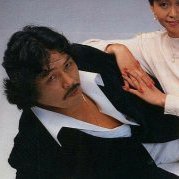

.jpg.fe8b83a1cbd5cb20dbe0a4ec8045d776.jpg)
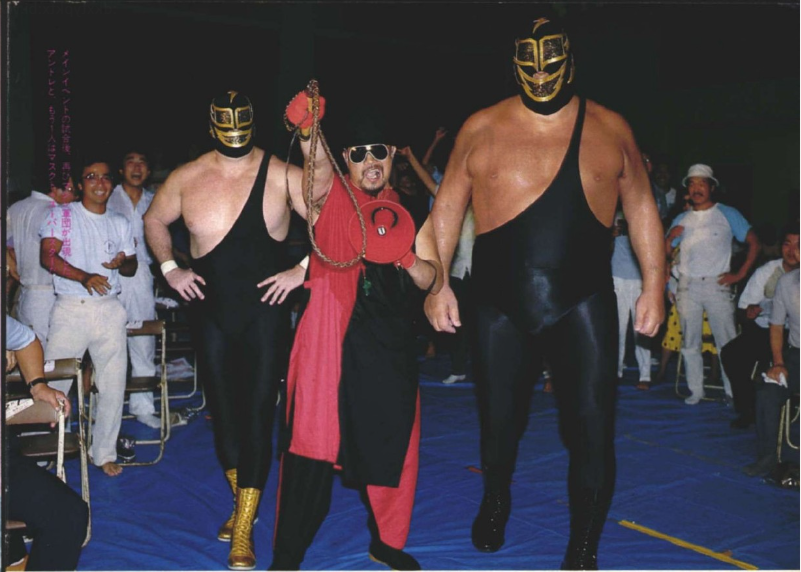
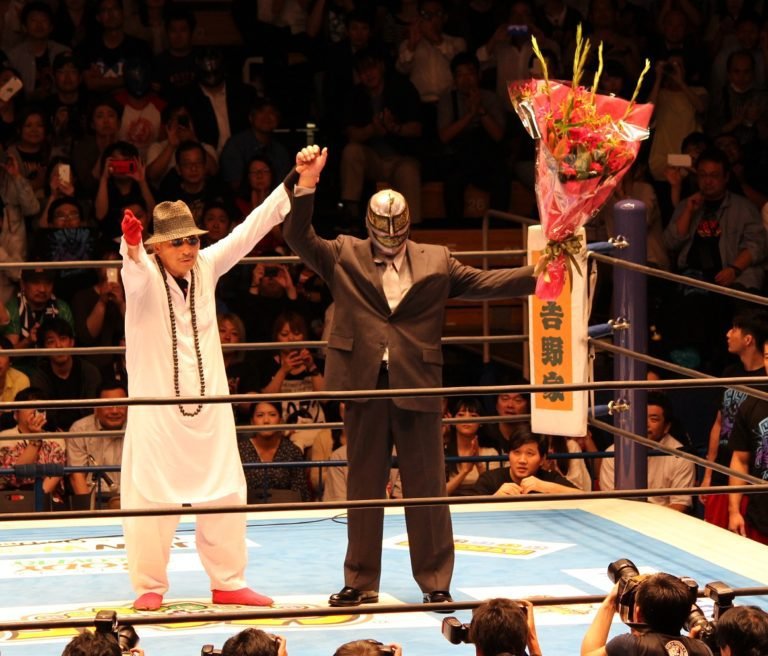
.png.769a03406ccb75fcb5b7b70b505ad13d.png)
